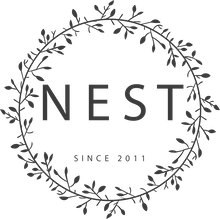Basic SEO checklist Tips website 2017
SEO has been a myth for centuries and many questions what’s SEO and how to do SEO? SEO stands for “search engine optimization.” It is the process of getting traffic from the “free,” “organic,” “editorial” or “natural” search results on search engines. The following Basic SEO checklist Tips website 2017 information is some basic DIY checklist you could do on your own to optimize your website to increase visibility on google search ranking.
INSTALL YOAST SEO
WordPress out of the box is pretty good already when it comes to SEO. However, we always recommend that people install an SEO plugin when they are working with their WordPress site. This allows you to have full control over optimizing what Google sees from your website. In terms of popularity, the free Yoast SEO and All-In-One SEO Pack plugins steal the show with their end-to-end optimization capabilities. We highly recommend the Yoast SEO plugin and in fact, a lot of this WordPress SEO checklist will have examples using this plugin.The Yoast SEO plugin allows you to write better content with page and keyword analysis, automatically generate XML sitemaps, enable breadcrumbs, add social and schema markup, as well as a multitude of other optimizations.
FOCUS KEYWORD
When it comes to WordPress SEO, it is important to remember that Google is still a computer algorithm, and that is why keywords still matter in 2016 and 2017. You definitely should be writing for your visitors and customers as Google recommends, but write smart. You can easily write for your audience as well as keeping the best SEO optimizations in mind. And remember, other search engines such as Bing and Yahoo rely sometimes even more on what some may call outdated SEO practices.
Whenever you write a blog post or post a page on your WordPress site you should always have a focus keyword in mind. Don’t just publish a post for the sake of pushing out more content. We will go more into keyword research further below. Using the Yoast SEO plugin you can easily set the focus keyword that you want to write about. For example, for this post we are using the focus keyword “WordPress SEO.” You can see that Yoast SEO actually analyzes the keyword density and it is reporting that it is a little low for this post. Generally, a 0.5% or more is a good amount to aim for. So we should figure out a way to include our keyword a few more times, naturally of course, within our content.
HEADER TAGS
The Google crawler (bot) checks HTML header tags such as H1, H2, H3, etc. to determine the relevancy of your site content. Generally, the best practice is to have a single H1 tag per post or page and then multiple H2s and H3s underneath that. Think of it has a hierarchy of importance. The H1 tag is one of your most important header and should contain your focus keyword. Additional headers could also include your keyword or long-tail variations of your keyword. However, don’t abuse headers. These are used to split up your content to make it easier to read for the visitor.
Most WordPress themes, if coded properly, will automatically assign the title of your page or post as the H1 header. You can then assign H2, H3, H4 headers etc. within your post or page. You can create a header by using the dropdown in the visual editor. This automatically assigns the block of text the <h2> or <h3> HTML tags that Google will read.
SUFFICIENT CONTENT
The old saying “Content is King” is still alive and well. Google and visitors love high-quality content. It is generally much better to publish higher-quality and longer-form content than it is to publish shorter content more frequently. This can vary of course. If you are news site, this might actually be the opposite. But long-form content has time and time again proven to win in SERPs. Back in 2012, serpIQ published some statistics on the importance of content-length. As you can see the websites holding the top positions have a lot more content.
And while the above graph is over 4 years old the same still applies today. Not much has changed when it comes to content and length. Neil Patel, a popular internet marketer, has a great post from 2016 on how long-form content can help boost your rankings. And you can probably tell that we have seen the same results here at Kinsta, otherwise we wouldn’t spend this much time publishing content this long!
CanIRank published their findings in an early 2017 study on the effectiveness of content length. They analyzed everything, such as seeing if longer content generates more backlinks and what happens to rankings for those on the third and fourth pages. In short, they found that content length, even with other possible factors in play, does still rank better.
Another advantage from long-form content is that over time you will also start ranking for not only your focus keyword but a lot of long-tail keyword variations, sometimes into the hundreds of keywords. And sometimes the traffic from all the long-tail variations will be more than that of your focus keyword. So it is really a win-win when it comes to long-form content!
SHORT URL
Google likes WordPress sites that are clean, organized, and structured; this includes using short URLs. They can also help improve your CTR. Marketing Sherpa ran a study and they discovered that executives are 250% more likely to click on an organic listing if it:
- had a fairly short URL and
- appeared directly below a listing with a long URL
So keeping your URLs as short as possible can be an enormous competitive advantage. The one thing to keep in mind is that WordPress automatically creates a URL for you based on the title. For this post we ended up with the following:
Note : All information listed above are sources obtained from https://kinsta.com/

